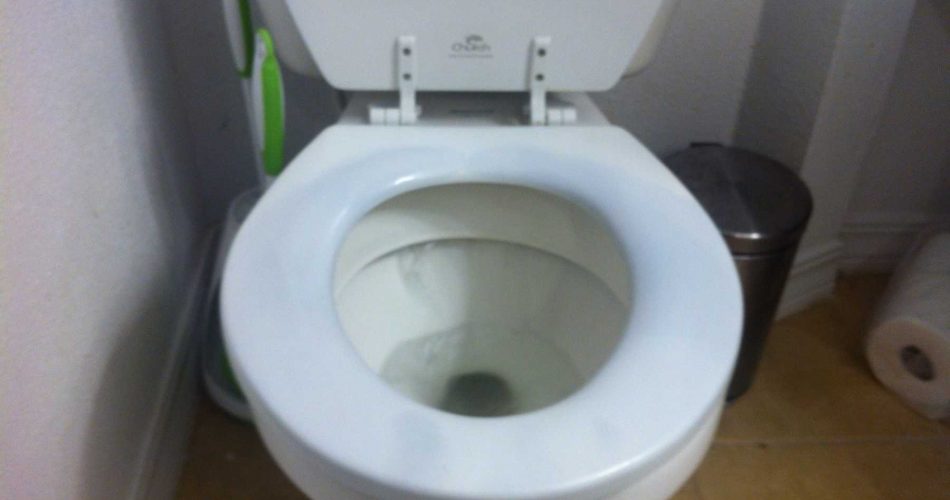It may be a symptom of chromohidrosis
Sweating is an important bodily function that keeps you cool during hot weather and tough workouts. However, sometimes it doesn’t result in sticky skin, but for a few people, sweating can also leave a blue toilet seat when they are on the toilet.
This phenomenon is called chromhidrosis, a rare skin condition identified by the production of colored sweat (often blue, but it can also be green, yellow, red, brown, or black).
According to the International Hyperhidrosis Society, there is not so much data on the condition, and because of that, it’s difficult to say exactly how many people and what kind of people are affected and whether there are external causes.
Nevertheless, we know there are 3 types of chromhidrosis: apocrine, eccrine, and pseudochromhidrosis.
Apocrine
Apocrine chromhidrosis affects the areas of the body that contain apocrine sweat glands. These glands are in the underarm and genital regions and the scalp, torso, eyelid, outer ear canal, and nipple areas.
According to the Mayo Clinic, these glands secrete a milky, odorless substance when you’re stressed, and when that combines with bacteria on your skin, it causes body odor. These secretions contain a greater concentration of highly oxidized lipofuscin granules, giving them a significantly darker green-brown to blue-black color.
Because apocrine glands don’t start functioning until puberty (when hormonal stimulation begins), this form of chromhidrosis is typically more noticeable when a person is younger, with symptoms becoming less severe as they grow up.
Eccrine
Eccrine glands are found almost everywhere on the body (except for the outer ear canal, lips, and certain areas of the genital region), and they’re especially concentrated on the forehead and cheeks, armpits, palms, and soles of the feet.
They’re the sweat glands responsible for controlling body temperature, keeping skin hydrated, and protecting the skin barrier.
Eccrine chromhidrosis may be caused by something internal, like an infection or excess bilirubin (an orange-yellow pigment formed in the liver), or external, like the ingestion of certain substances.
Those substances might include water-soluble dyes, heavy metals (like copper), excess food coloring or flavoring, as well as certain medications (rifampin, an antibiotic; quinines, an antimalarial; and levodopa, a dopamine precursor used to manage Parkinson’s).
Excess pigments from both internal and external sources are assumed to make their way to the eccrine glands, where they’re expelled with perspiration, eventually combining to form colorful sweat. This kind of disease can happen at any age.
Pseudochromhidrosis
Pseudochromhidrosis can also happen at any age and stem from a variety of causes, all of which are external in nature.
This form of colored sweat is seen when normal perspiration at the skin surface interacts with other compounds, such as dyes (from a new pair of jeans, perhaps), chemicals (a la sunless tanning sprays), or chromogenic bacteria on the skin (bacteria that produce pigments).
So, it’s not your sweat that’s colored; the color comes from the way your sweat interacts with things outside your body.
Treatments
Unfortunately, because apocrine chromhidrosis is a chronic skin disorder, symptoms may improve with age, but this isn’t always the case. The present treatment methods aim to alleviate symptoms as much as possible; however, there is no cure.
Apocrine secretion can be triggered by emotions (stress and anxiety), rubbing of apocrine-heavy areas (friction from clothes), and hot showers and baths, so doing what you can to reduce these triggers—practicing mindfulness, wearing breathable clothing, and taking lukewarm showers—can be a solid first step.
The primary treatments for apocrine chromhidrosis are topical agents antiperspirants (such as Drysol), to temporarily plug the pores causing you trouble, and capsaicin cream, to deplete nerve cells of Substance P, an important chemical that controls apocrine gland secretion.
If topical products are irritating to your skin, another option is Botox injections, which block the nerves that stimulate the sweat glands, with dryness lasting anywhere from 4 to 12 months.
Squeezing the glands to empty them, similar to how you’d pop a zit, can also offer relief, but the results only last up to a few days. Ditto for manual pressure (pressing down to express the glands) to improve the look of the affected area, with results lasting only 24 to 72 hours.
Treatment options for the other 2 types of chromhidrosis are more promising, though: eccrine and pseudochromhidrosis may completely resolve once the cause is avoided or treated.
This process might involve your doctor testing skin scrapings, secretion smears, and extraction samples from clothing. Once the cause has been confirmed, they can help you determine the best course of action: treating it (with antibiotics, for example) or replacing it with another option (say, a different medication) that doesn’t trigger colored sweat.
Although chromhidrosis is a harmless skin condition, since colored sweat can be a sign of something more dangerous, it’s crucial to see your doctor or dermatologist for a proper diagnosis.
Tracking your daily activities for 2 to 3 weeks, such as what you’ve eaten and any chemicals you’ve come into contact with leading up to your doctor’s appointment, can help determine your triggers and what the potential culprits might be.
Source livestrong.com
